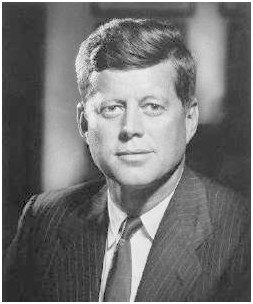

Act adopted by the Council of the Organization of American States (OAS) on 13 September 1960 in Bogotá, Colombia, and designed to improve living conditions and keep communism at bay in Latin America. The main objectives of the Act of Bogatá were to improve the socioeconomic situation of Latin American peoples, to develop the Latin American economy, and to stanch the threat of communism in the region. These goals were to be achieved by domestic and international financial assistance, social and economic revitalization programs, and the reformation of domestic institutions.
The act's objectives were to be realized through the buttressing of democratic institutions in Latin America. The values promoted by the act were said to "lie at the base of Western civilization" and included political and religious freedom, democracy, and the dignity of the individual. Regional and international cooperation was paramount and required self-help efforts in the areas of taxation, land distribution, education and vocational training, health care, and housing.
The 1960 act was divided into four sections. Section I, "Measures for Social Improvement," was subdivided into five parts. Part A recommended "measures for the improvement of conditions of rural living and land use." These included increased land ownership, the financing of farmers through governmental programs, and the reformation of tax systems to put more land to work. Part B recommended "measures for the improvement of housing and community facilities." These would be met by increasing the availability of low-cost housing, better planning, and the facilitation of public and private investment. Part C recommended "measures for the improvement of educational systems and training facilities" by employing mass education and the development of subjects and specialists in the arts and sciences. Part D recommended "measures for the improvement of public health," which would help eradicate malaria and other infectious diseases, reduce infant mortality, provide health insurance, promote health education, and increase the number of hospitals. Part E recommended "measures for the mobilization of domestic resources," which focused on encouraging domestic savings and sound financial practices, implementing fair taxes, and allocating funds for social development.
In Section II, "Creation for a Special Fund for Social Improvement," the act stipulated that a special inter-American fund would be created by the U.S. government to aid social development. The fund was to be operated by the Inter-American Development Bank. Money would be provided to Latin American nations intent on reforming their institutions in accordance with social and economic development.
Section III, "Measures for Economic Development," declared that the above-listed measures were aimed at economic development whose implementation was promptly required. This was to be achieved through public-private finance that involved the United States, Western Europe, and international lending agencies.
Section IV, "Multilateral Cooperation for Social and Economic Progress," stipulated that multilateral cooperation would be monitored through annual meetings by the Inter-American Economic and Social Council. The new council and the OAS would be used to promote trade and increase capital flow from the Western Hemisphere and other international sources.
The Act of Bogotá provided for the creation of the Alliance for Progress, which was confirmed by the Charter of Punta del Este in 1961, and became the vehicle for U.S. Agency for International Development (USAID) programs and outreach in Latin America during the 1960s.



















